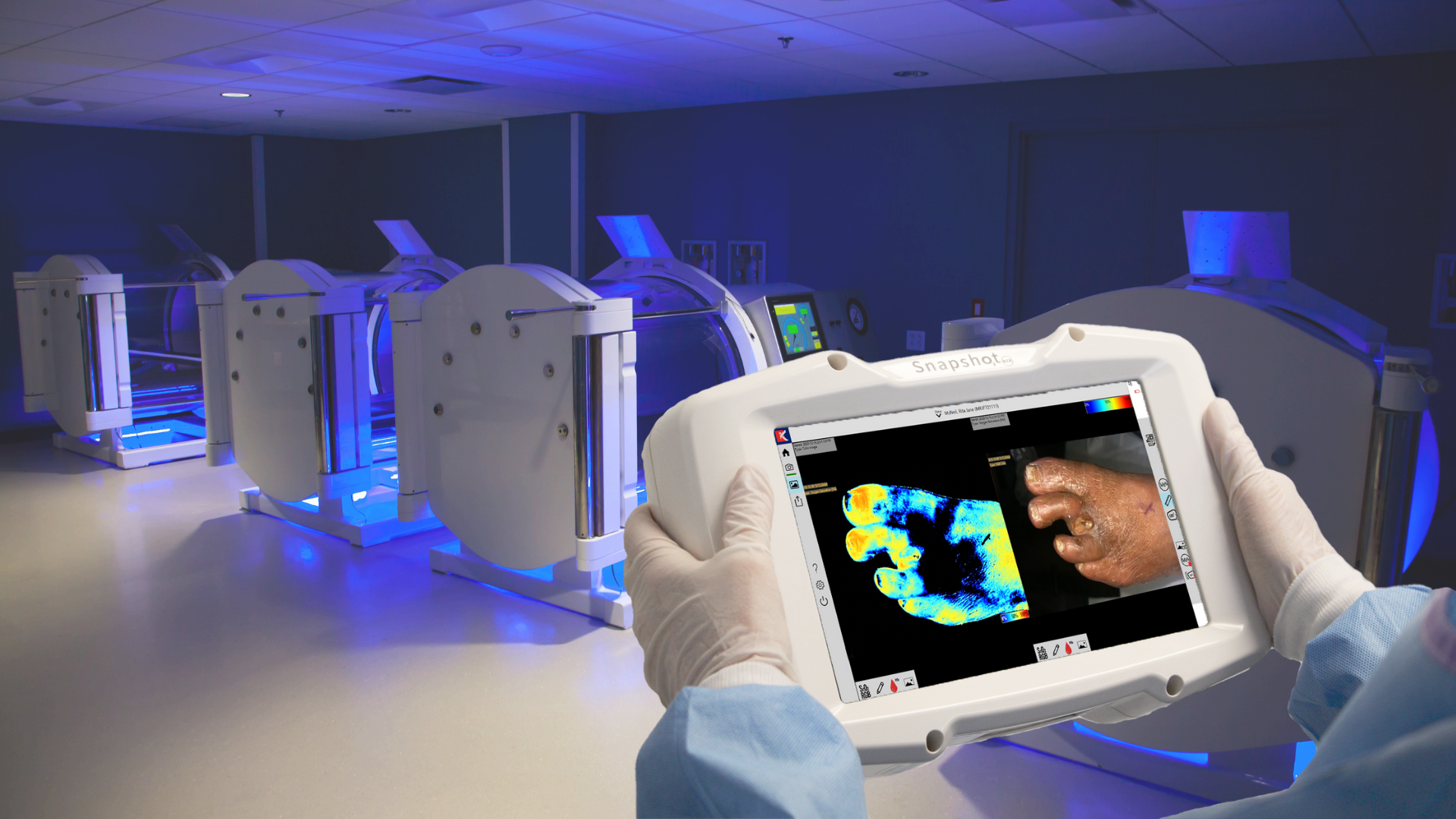How Does Hyperbaric Oxygen Therapy Assist the Wound Healing Process?
Hyperbaric Oxygen Therapy (HBOT) is used by many wound care experts to aid in the healing of chronic and acute wounds. Let’s take a “dive” into how efficiently and easily it is to document HBO therapy effectiveness in the wound healing process using the innovative SnapshotNIR as a wound assessment tool.
What conditions can hbot be beneficial for?
HBOT involves breathing pure oxygen in a pressurized environment. It is a well-established treatment for serious infections and wounds that may not heal.
Common conditions that HBOT can be prescribed for:
Wagner Grade 3 diabetic foot ulcers
Failed flaps and grafts
Clostridial myonecrosis
Necrotizing soft tissue injuries
Chronic foot and legs wounds caused by diabetes
In an HBOT chamber, the air pressure is increased two to three times higher than normal air pressure. Under these conditions, you can gather much more oxygen than would be possible breathing pure oxygen at normal air pressure. When your blood carries this extra oxygen throughout your body, it helps fight bacteria and stimulates the release of growth factors and stem cells, which promote healing.
“It’s important to follow clinical pathways and your local coverage determinations to ensure that we are placing the clinically appropriate patients in the chambers. On initial assessment you must complete a thorough history and physical. Based on findings, wound classification, co-morbidities, and wound appearance; determine if the patient requires vascular studies, imaging, or laboratory evaluation. Based on results and documentation you can then determine if your patient is an appropriate candidate for hyperbaric treatments.”
Christine Shettel, RN, BSN, WCC, DAPWCA, PWRC, Identifying and Qualifying Patients for Hyperbaric Oxygen Treatment, American College of Hyperbaric Medicine's blog.
how can snapshotnir assist in hbot?
SnapshotNIR can support and confirm visual evaluation and real-time decision-making with wound care and surgical care therapies, including HBOT. The point-of-care wound imaging device can accurately assess the patient and has many benefits of use with HBOT. Some of the benefits of using this wound assessment tool with hyperbarics are:
May replace TCOM, avoiding direct patient contact and eliminating disposables
Vastly decreases the time required to perform vascular assessments pre- and post-dives
Improves patient flow-through at the wound care center
Confirms supportive vasculature for HBOT
Increases patient compliance with treatment with a visual demonstration of treatment results
Supports scheduling and serial imaging
“One of the most critical functions of SnapshotNIR with hyperbarics is the ability to capture an oxygenation reading at a moment in time and then continue to capture over the course of treatment. Going back to compare and show definitive visual improvements over time can really engage patients.”
Dr. Thomas Serena
Why use SnapshotNIR serial imaging for HBOT?
Pre-HBOT images can confirm whether a patient is a good candidate for the therapy in the first place and post-HBOT images can track and document the patient’s responsiveness to treatment over time. SnapshotNIR is efficient, effective, and affordable, with the ability to take consecutive images in a matter of seconds with a single click of a button. The device is lightweight and handheld and can be operated by physicians and nurses with no need for extensive training.
The changes in StO2 captured by SnapshotNIR are of considerable value in image interpretation:
Compare pre- and post-dive images: look for differences in oxygenation between like tissue
Compare pre-dive images in chronological fashion to document continued progression with treatment
Look for areas in the image that vary compared to surrounding tissue
View the RGB clinical image to help determine if a “low” oxygenation reading is expected or due to other factors (e.g. shadowing caused by curvature)
Oxygen is the most important factor in healing. Understanding oxygenation of the proximal microvasculature is key to understanding potential tissue survival and healing. The more informed you are, the greater impact you can make by accelerating vascular assessment, which can reduce complications and improve outcomes for your patients. When applying HBOT in your practice, SnapshotNIR can be a highly effective wound assessment tool (1).
ADDITIONAL HYPERBARIC OXYGEN THERAPY RESOURCES:
For more information on using SnapshotNIR with HBOT, view and download our brochure here.
Case studies featuring SnapshotNIR documenting the effects of HBOT can be found here and here.
Reference: (1) https://www.mayoclinic.org/tests-procedures/hyperbaric-oxygen-therapy/about/pac-20394380


